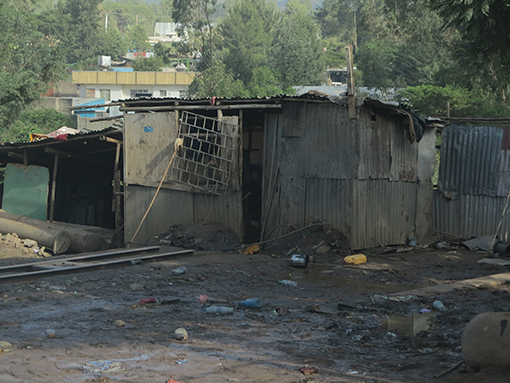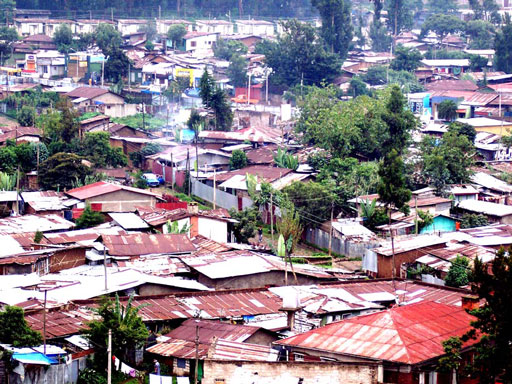1.1 Urbanisation and development trends
Ethiopia is among the poorest countries in the world and, with a population approaching 100 million, has grown and developed significantly in recent decades. One of the many ways you can see this growth reflected is by looking at how fast existing urban areas are expanding, and how villages and small towns are rapidly growing into larger towns and cities. Between 1984 and 2007, the urban population – defined as the percentage of the population living in towns of at least 150,000 people or within one hour’s travelling distance of a town of at least 50,000 people – increased from 3.7% to 14.2% (Schmidt and Kedir, 2009). Between 2010 and 2015, the rate of urbanisation is estimated to have further increased at a rate of 4.9% every year (CIA, 2015). (Urbanisation is the increase in the number of people living in towns and cities relative to rural areas.)
The trend in urbanisation is strongly associated with economic growth and development. As economic activities increase in urban areas, opportunities open up for employment, which attract people living in rural areas to move into the towns and cities.
As the total population increases, the land available per person for farming in rural areas decreases. Furthermore, degradation of the natural environment leads to low productivity of the land. The shortage of land, coupled with reduced productivity, results in a low income for rural households. This encourages people, particularly young adults, to migrate from rural to urban areas in search of better employment opportunities.
The overall effect of these trends is that the number of people living in urban areas keeps increasing.
Political and administrative bodies in urban areas have to provide basic services such as electricity, telephone, water supply, waste disposal, healthcare and education. However, the infrastructure required to deliver these basic services to an acceptable standard is growing at a much slower pace compared to the increase in population.
Slums are becoming a common feature in most towns (Figure 1.1). Slums are urban areas that are heavily populated and have sub-standard housing and very poor living conditions. They provide minimum shelter requirements for communities with low or no income. Slums are the usual entry point for those from rural areas to the complex urban environment. However, due to intense competition, securing a job with reasonable pay often proves very difficult. As a result, the majority of people who live in slum areas remain there permanently because they cannot earn enough to move into better housing.

Despite the very high population density – the number of people living in a unit area of land – and the dire need for access to water, electricity and roads, slums are not the main focus of attention for administrative bodies. Slums arise in areas with little or no government scrutiny and are mainly illegal settlements. Therefore these communities do not have legal rights to the land they live on, which is a fundamental requirement for claiming services in urban areas. Although the government recognises the need, it is difficult to provide basic services to slum areas as part of its regular work.
Peri-urban areas are another common feature of towns. These areas are interface zones, located on the outskirts of towns, which show characteristics of both rural and urban areas. They are similar to urban centres in that they have high population density and services such as electricity, water and transport are probably available nearby (but may not be affordable). However, people in peri-urban areas may be farmers and grow food to supplement their income so also share similarities with rural communities. As towns spread, peri-urban areas may become part of the main urban area (Figure 1.2).

The increasing urban population in Ethiopia may support economic growth in the country, but it is a continuing challenge for urban administrations to provide adequate access to basic services to enable these communities to remain healthy and productive.
Identify three key features of urbanisation.
The three main features are listed below. You may be able to think of others.
- Significant population numbers caused by increasing influx of people from rural areas.
- Slums populated by low income communities with little or no access to services.
- Peri-urban areas located on the outskirts of the town that exhibit characteristics of both urban and rural areas.
Learning Outcomes for Study Session 1
